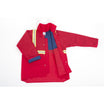Imagine the sense of serenity and tranquility we achieve when we gaze at a beautifully manicured garden with trees standing tall and majestic. Now, think about the people who make this happen - Arborists, unsung heroes who keep our landscapes pristine and secure. This article will dive deep into the world of Arborists - the tree care industry, the growth and potential it holds, and the crucial role quality products and proactive tree care play in ensuring both the health of trees and safety of those caring for them. So, buckle up and embark on an enlightening journey to understand the "green soldiers" better.
Tree Trimming Services Industry
Market Growth
Delving into the bustle of the Tree Trimming Services Industry, it's fascinating to find that the market size has been steadily sprouting. With an average annual growth rate of 3.4% between 2018 and 2023, the industry has truly branched out. Data suggests this blossoming trend isn't slowing down either: the forecast predicts an increase of 3.0% in 2024. This consistent growth underlines the maturing nature of the industry, reflecting a burgeoning demand.
Revenue Increase Forecast
As we shift from leaves and branches to dollars and cents, the forecasted revenue increase mirrors the robust market growth. This correlation isn't surprising, as market growth often paves the way for enriched revenues. Although specific figures aren't available, given the robust market expansion rate, it's logical to anticipate a proportional rise in revenue. Therefore, it's safe to say, businesses within the Tree Trimming Service Industry have a fruitful future to look forward to.
Workforce Expansion
Circling back to the human side of the industry, the workforce engaged in American tree trimming services has also experienced impressive leaps. From 2018 to 2023, the number of people working in this field surged by an average of 5.9%. This expansion showcases an industry that's not just thriving, but also supporting job growth and contributing positively to the economy.
Evidently, the Tree Trimming Services Industry is a field that offers a fresh perspective on success - it's not just about thriving in the market, it's about growth, involvement, contribution, and cultivation. With the promise of steady growth in the coming years, and a blooming workforce to meet the increasing demand, it’s clear that the industry is climbing up, much like the trees it services!
Arborist Management System Market
Be it a small-town operation or large municipal corporation, the utility of Arborist Management Systems can be seen universally. These nifty tools are the heroes behind safer, healthier, and aesthetically pleasing landscapes boasting splendid trees. With technology being ingrained in every walk of our life, it's no surprise that even tree care professionals are leveraging digital tools to simplify and streamline their operations.
Market Size
The market size of arborist management systems is undoubtedly noteworthy. The previous financial year witnessed a striking figure; the total market value of Arborist Management Systems crossed the USD 360.4 million mark in 2023. Yes, you read it right – we're talking hundreds of millions, signifying the large-scale usage and acceptance of these systems worldwide.
Evidently, these figures are influenced by several factors such as the rise in concern for tree health, the need for organizational efficiency, and increased automation in various sectors, to name a few. Combine these factors with the continual technological advancements, and it's easy to see why this industry's market size is so substantial.
Growth Rate
The evolution of arborist management systems, like other technologically driven sectors, is continuously expanding. The projected growth rate stands firm at around 5% Compound Annual Growth Rate (CAGR) from 2024 to 2032. This positive forecast can be attributed to the increasing environmental awareness and the shifting focus towards sustainable urban development worldwide.
In essence, the arborist management system market portrays a promising landscape. It is on a steady climb and is expected to stay on this trajectory in the upcoming years, principally driven by tech advancements, environmental concerns, and the unprecedented need for efficient arboriculture practices. Stay tuned for further insights into this flourishing market.
Global Tree Care Service Market
Welcome to the forest of opportunities that is the Global Tree Care Service Market. From budding startups to seasoned industry leaders, the market offers unparalleled prospects for growth, innovation, and sustainable success. It's a world where green not only represents the product, but also the immense potential for generating revenue.
Revenue Generation
The bountiful tree care service industry is nourishing economies across the earth, sprouting just over $37 billion in annual revenue since 2016. This impressive figure represents the deep-rooted potential of the industry and its power to generate a steady stream of income for businesses big and small. Whether it's commercial landscaping services or residential tree trimming operations, every branch of this comprehensive market contributes to the industry's overall financial growth.
Let's take a closer look at some of the lucrative branches of the tree care service industry:
- Arborist Services: These specialized tree doctors diagnose and treat various tree diseases, in addition to providing advice on tree care. Their expertise is invaluable, and as such, their services are highly sought after.
- Tree & Stump Removal: Besides planting and nurturing, removing trees and stumps is a significant part of the tree care service market. Whether due to safety reasons or aesthetics, these services are regularly needed, providing steady income.
- Landscaping: Meticulously maintained greenspaces are part and parcel of corporate and residential aesthetics. Landscaping services, which often involve tree care, are in high demand, fueling the growth of the industry.
Overall, revenue generation in this market is as diverse as the forest itself – offering myriad ways for companies to grow and thrive.
Growth Forecast
As we gaze into the future, the growth forecast of this market looks as promising as a fertile seedling ready to sprout. Between 2024 and 2032, the Global Tree Care Service Market is anticipated to rise at a considerable rate. This growth is nurtured by several factors, including increased environmental consciousness, urbanization, and recognition of the aesthetic and health benefits of having well-cared-for trees in our surroundings.
If there's one steadfast truth in the tree care service market, it's this: As long as there are trees, there will be a demand for those who can care for them. So, let's gear up to explore this invincible forest, replete with opportunities for prosperity, innovation, and sustainable success.
Projected Job Growth in Arborist Industry
The ever-green industry of arboriculture is inching towards an exciting growth trajectory. With a renewed global awareness on environmental conservation and enhanced urban forestry initiatives, the spotlight now falls on the arborist industry. In this section, we'll dive deep into understanding the projected job growth in this sector, which is often overlooked yet immensely essential.
Projected Growth Rate
According to a recent forecast, the arborist job market is blossoming at its fullest. Anticipated to grow at a rate of 5% from 2018 to 2028, the industry is expected to pump in approximately 61,300 new jobs over the upcoming decade. This rate of growth is promising, considering the average growth rate for all occupations sits at about four percent.
Furthermore, such a thriving job market can mainly be attributed to the increasing emphasis on the significance of maintaining and preserving trees. Urban expansion and the developing need for professionals who can manage and ensure the health of trees are some of the other primary factors driving this growth.
Indeed, these exciting figures represent a vivacious arborist job market, loaded with opportunities. As our living spaces continue to urbanize, the vital role of arborists in maintaining our ecosystems, providing aesthetic appeal, and contributing to our overall quality of life will only become more pronounced. It's clear that the future growth of the arborist industry lies in the hands of skilled professionals ready to combat environmental challenges head-on. Is that you?
Landscaping Industry Growth
In the bustling world of home improvement and property management, one field has been flourishing steadily: the landscaping industry. With a more significant number of property owners adopting landscaping services, data indicates this industry's market size has grown remarkably over the years.
Market Size Growth
The green industry -- "landscaping services" in the common parlance -- is a vast umbrella sector covering landscape architecture, design, construction, and maintenance. It also branches into the niche areas of garden centers and the sustainable agriculture movement. While often overlooked, this industry's economic significance is nothing short of staggering.
For instance, between 2017 and 2022, the market size of the landscaping industry has grown at an average rate of 5.3 percent per year. This considerable growth rate demonstrates the industry's robust strength and resilience, regardless of the economic conditions.
The growth in market size isn't just a result of higher demand alone. From residential landscaping to commercial landscaping services, garden health to pest control, every service area within the industry has seen an upswing. These developments mark a clear trend towards appreciating green spaces and the need for professional services to maintain them.
Remember, landscapes don't merely beautify our surroundings; they also play a vital role in our environment. Through these services, we can expect a sustained desire for aesthetically pleasing gardens, healthy yards, and efficient land management methods that will continue to drive the industry forward.
Indeed, with its consistent growth and adaptive nature, the landscaping industry exhibits not only stability but also promising potential for the future. This growth trajectory shows that despite facing various challenges, the landscaping industry is poised for further expansion, helping property owners reap the benefits of beautifully maintained outdoor spaces.
In the ever-changing world of business, only a few industries can boast such promising market growth and maintain consistent development. Regardless of fluctuating economic scenarios, the landscaping industry has proven its tenacity and vitality, making it one of the frontrunners in overall industry growth.
Benefits of Hiring a Certified Arborist
When it comes to taking care of the trees on your property, choosing the right professional can make a world of difference. The benefits of hiring a certified arborist extend beyond simply maintaining the aesthetic appeal of your landscape. Such professionals can also enhance the longevity of your trees and ensure safety for your property and its residents.
Longer Tree Life
All living things need proper care to flourish, and trees are no exception. Proper tree care can promote longer tree life, but it requires a certain level of knowledge and expertise. That’s where certified arborists come into the picture.
- Understanding Trees: Arborists have a deep understanding of various tree species’ needs. They have a knack for diagnosing health issues and prescribing treatments that promote long-term health.
- Proper Pruning: An essential part of tree care, pruning can give trees a boost in longevity. Certified arborists have the skills to prune trees appropriately, removing dead or diseased branches in a way that stimulates growth but does not stress the tree.
- Nutrition and Soil Management: Certified arborists can also help you manage the soil and nutrients necessary for healthy tree growth. They can recommend the type and amount of fertilizer to use, as well as provide guidance on other factors critical to a tree's well-being, such as soil pH.
Improved Curb Appeal
Trees significantly influence the visual appeal of a property. Well-maintained and healthy trees can greatly enhance your home's curb appeal, potentially increasing the property value as well.
- Tree Aesthetics: Certified arborists know how to shape trees for optimal aesthetic appeal. They're proficient at trimming and pruning to promote attractive growth.
- Landscape Design: Arborists can also contribute to the overall design of your landscape. They can advise you on the selection and placement of trees for the most visual impact.
Improved Safety
One of the key benefits of hiring a certified arborist is safety. Trees that are not properly cared for may pose a threat to your property or your family.
- Regular Check-ups: Regular tree check-ups can help detect potential hazards early. Certified arborists have the training to spot warning signs that others might miss.
- Emergency Tree Care: When a tree becomes hazardous due to extreme weather or disease, certified arborists can provide emergency tree care. They're equipped to handle such situations safely and efficiently, using specialized equipment.
From the health and longevity of your trees to the safety and aesthetics of your landscape, the benefits of hiring a certified arborist are many. When you invest in professional tree care, you invest in a greener, safer, and more beautiful property.
Importance of High-Quality Arborist Ropes
Ensuring the safety of arboricultural work is largely a matter of the right tools and materials. High-quality arborist ropes are one such integral tool that not only helps to ensure safety but also guarantees long-term usage. The importance of these ropes is immense as they serve as an invaluable partner to arborists, facilitating their tree work by leaps and bounds.
Safety Assurance
First and foremost, safety is of paramount importance in arboriculture. Arborists work at great heights, often in hazardous conditions, and a reliable arborist rope acts as their lifeline. A high-quality rope offers superior strength, durability, and resistance to wear and tear, making tree work a smoother, safer operation.
- High-strength attributes enable arborists to carry heavy loads without worrying about the rope snapping.
- Durable ropes resist degradation over time, thus maintaining their initial strength and reducing the risk of accidents.
- Resistance to wear and tear ensures that the ropes can withstand tough conditions and repeated use.
Longevity and Performance
Aside from safety, high-quality arborist ropes also present a cost-effective solution through their extended lifespan and superior performance.
- High-quality ropes are designed to last, preventing the recurring cost of replacement.
- Such ropes also maintain their performance over time, ensuring a smooth and efficient operation in each use.
Arborists cannot afford to compromise their safety and performance in their task. That's why sourcing high-quality arborist ropes is a worthy investment, ensuring safer tree work and lasting materials. To put it simply, quality should never be sacrificed for cost, especially when the stakes are so high.
In this light, it becomes clear that high-quality arborist ropes are more than just a tool - they are instrumental in ensuring the success and longevity of an arborist's work. It's a testament to the true value of high-quality tools in specialist trades.
Benefits of Proactive Tree Care
Rising above the urban landscape, trees breathe life and beauty into our cities. They're not just aesthetically pleasing; they provide remarkable ecological benefits, from lowering temperatures to sequestering carbon. But to ensure that our trees are healthy, resilient, and continue to provide these benefits, proactive tree care is essential. In this article, we'll discuss how proactive tree care contributes to creating safer and more resilient urban landscapes.
Safer Urban Landscapes
One crucial advantage of proactive tree care involves making our urban landscapes safer. Regular pruning and inspections can significantly decrease the risk of tree-related accidents, such as loose branches toppling on people's properties or power lines.
Consider these advantages of proactive tree care in creating a safer urban landscape:
- Reduces potential hazards: Proactive tree care ensures that possible risks like dead or weak branches are identified and taken care of early.
- Protects infrastructure: Regular inspections and care keep falling branches from damaging buildings, cars, or even overhead utility lines.
- Enhances visibility: Pruning trees near roadways and footpaths allows for clear sightlines, thus reducing accidents caused by obscured vision.
Resilient Landscapes
Our urban landscapes are not just spaces for habitation; they are ecosystems teeming with life. Proactive tree care creates resilient landscapes that can withstand the impacts of pests, diseases, and changing climate conditions.
Here's how proactive tree care leads to resilient landscapes:
- Prevents disease spread: Regular checkups and treatments can catch diseases early before they devastate an entire grove or city park.
- Encourages biodiversity: Proactive tree care promotes a variety of species, which strengthens the ecosystem's overall health and resilience.
- Mitigates climate effects: Healthy trees are better able to withstand harsh weather conditions and absorb more CO2, which helps moderate climate change impacts.
The benefits of proactive tree care are clear: safer and more resilient urban landscapes. It takes time, effort, and an understanding of how trees grow and respond to their environment. Nonetheless, the rewards - scenic beauty, reduced risks, and a healthier ecosystem - are well worth the effort.
Remember, proactive tree care is not just about the trees; it's about our quality of life, our communities, and our planet. So let's appreciate the giants of our cities and give them the attention and care they deserve.
Manual Labour in Tree Care
Tree care can be an incredibly rewarding yet demanding line of work. It's physically intense and often requires exposure to harsh weather conditions. As essential workers dealing with mother nature, tree care professionals engage in a series of tasks both on the ground and at high altitudes, ranging from pruning branches to diagnosing and treating tree diseases.
Typical Tasks
Manual labour in tree care often revolves meticulously around the health and overall aesthetic of trees. Tasks vary depending on the needs of each tree. Here are some common elements these hardworking professionals undertake day in and day out:
- Pruning: Pruning involves removing specific branches or stems to benefit the tree's health, create better structure, or reduce risk. This process versatility makes it one of the most common tasks of tree care.
- Disease control: Managing and treating tree diseases or pests is another critical aspect. This task often requires close inspection and diagnosis, followed by the right treatment plan.
- Planting and Transplanting: Planting new trees or relocating existing ones also falls under tree care. This task requires a good understanding of different tree species and their specific soil and watering needs.
- Stump grinding: Once a tree is cut down, it leaves behind a stump. Stumps can be unsightly and hazardous, requiring tree care professionals to grind or remove them entirely.
Despite the intense physical demands and risks, tree care professionals face, conducting these tasks overlooks their better aeration, bags a stronger root system, and ensures healthier trees. However, one can't undermine the immense importance of suitable gear for these professionals.
Imagine it's pouring down while you're engaged in pruning trees. Soaked in rain, conducting arduous tasks could become even more challenging. That's where the best rain gear for outdoor work steps in. High-quality rain gear always ensures that regardless of the elements, tree care professionals can carry on their essential work without hindrance. It not only helps in enhancing job efficiency but also in maintaining safety and comfort throughout the task.
While manual labour in tree care is not a walk in the park, the satisfaction of keeping trees healthy and landscapes beautiful makes all the difference. Remember, tree care is more than a job, and every task plays a critical role in the bigger picture of preserving nature.
Conclusion
The growth and expansion of the arboriculture industry underline the increasing recognition of the importance of tree care and maintenance. As the market for arborist services continues to surge, so too does the demand for certified arborists and reliable work gear.
Safeguarding the well-being of those performing the challenging tasks inherent in tree care is paramount, hence the value of high-quality gear and equipment cannot be overstated. Whether it's high-strength ropes or resilient workwear, these tools not only ensure the efficiency of operations but also add a critical layer of safety.
For instance, outfits like Rain Gear Pro are pushing the boundaries in the work gear industry, setting new standards for safety and durability. Their chainsaw safety pants are a testament to their commitment to quality and safety. These pants, engineered with keen attention to detail, are made to withstand harsh conditions while offering optimal comfort.
So, as we reflect on the growth, potential, and challenges of the tree care industry, it's vital to remember that, while specialized skills and knowledge are essential to carry out the work, equally important is the armor that protects those who brave the heights and hazards. Visit Rain Gear Pro to explore high-quality gear designed to keep you safe, comfortable, and efficient in your work.
Frequently Asked Questions
-
Why are quality products important for arborists?
Quality products are important for arborists because they ensure safety, durability, and efficiency. Arborists rely on their tools and equipment to perform tasks at heights and deal with potentially hazardous situations, so using high-quality products is crucial to prevent accidents and ensure long-lasting performance.
-
What kind of products are essential for arborists?
Essential products for arborists include climbing gear (harnesses, ropes, carabiners), cutting tools (chainsaws, pruning shears), protective equipment (helmets, gloves, safety glasses), and equipment for tree care (rigging gear, tree wraps, stump grinders). Using reliable and durable products in these categories is essential for arborists' safety and efficiency.
-
How can quality products improve the productivity of arborists?
Quality products improve the productivity of arborists by reducing downtime and improving tool performance. With reliable and efficient tools, arborists can complete their tasks more quickly and effectively, leading to increased productivity and better overall results.
-
What should arborists consider when choosing quality products?
When choosing quality products, arborists should consider factors such as durability, brand reputation, user reviews, safety features, and warranty. It's important to invest in products that are specifically designed for arboriculture and have a proven track record of reliability and performance.
-
Are quality products more expensive for arborists?
While quality products may have a higher upfront cost, they often provide long-term value and cost savings. High-quality products tend to last longer and require less frequent replacement, reducing the overall cost of ownership. Additionally, they offer better performance and safety, which can prevent accidents and potential expenses associated with them.























Leave a comment
This site is protected by hCaptcha and the hCaptcha Privacy Policy and Terms of Service apply.